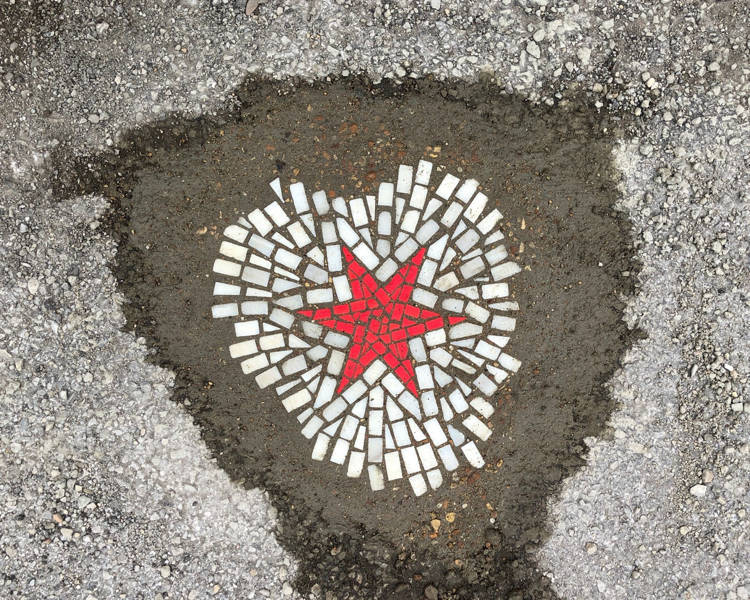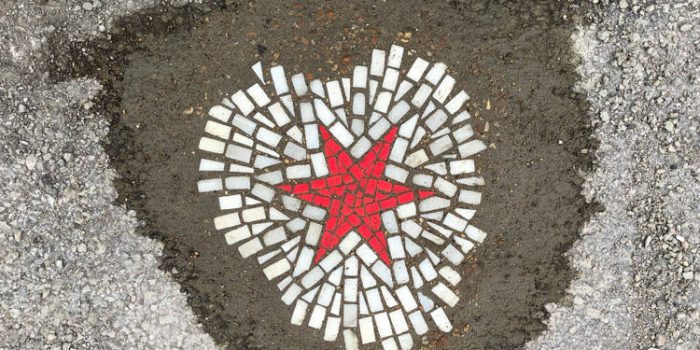Meet Jim Bachor – a street artist based in Chicago and among those few street artists whose work can be called art pieces and public service. Jim specializes in repairing potholes by filling them up using his durable and incredible mosaics.
Jim’s career as a pothole artist kicked off after his visit to the ancient city of Pompeii located in Italy. It was there that he learned just how long-lasting mosaics really were. A few months later, he found himself in Italy where he was learning about the secrets of ancient mosaic art. He followed it up as a hobby for a couple of years and then started doing commission works. Back in May 2013, he decided to use his skills to take care of a bothersome pothole in his neighborhood.
Bachor said, ‘Flashback to May of 2013, the potholes were really bad in my area of Chicago. There was one in front of our house that was a stubborn one that refused to stay fixed. The city would put asphalt in it and it would pop back out. It just dawned on me over time that I had this passion for this art form that is so durable and permanent, and I had this hole in front of my house that refused to stay fixed. So, what I did was I created a custom piece of art for that pothole.’

It was different than working from the comfort of his studio, of course. However, Jim Bachor doesn’t shy away from admitting that it took him half a dozen tries to learn how to pull it off properly. He found out that protecting them for a couple of hours before they set was the most crucial part. He relied on his boys’ soccer training cones to keep it protected from the traffic.
Jim goes on to say, ‘It’s a two-step process. The first step takes about an hour-and-a-half to install it, to put the art in. Then I protect it with traffic cones or maybe a tarp depending on the weather. Then I come back 8-10 hours later once the concrete is hard to do a final scrub with metal brushes and take photos of it to document it because that’s the best it’s ever going to look. I can’t do it any faster than that.’


